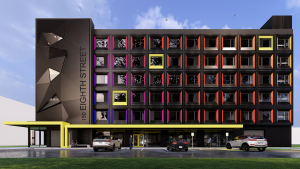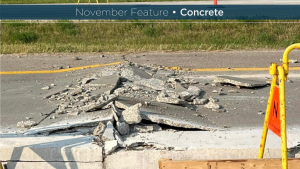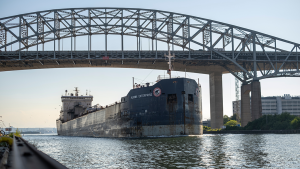For all the talk at the federal and provincial levels about addressing climate change through green investment and improved building codes, Canada is showing little specific action regarding the energy efficiency of existing commercial buildings.
That’s important, because about 80 per cent of buildings standing today will still be standing in 2050. By that time, the federal government is committed to reaching net-zero emissions.
“Climate change is real and the path forward is clear,” proclaims the government summary of Canada’s 2022 budget. “To protect our planet — and to build a stronger economy — we must do even more on climate action.”
Yet among all the initiatives covered by the estimated $12 billion pledged, there’s only meagre $5 million allocated to deep retrofits for about 10 to 15 Toronto projects. Beyond that, there’s no mention of any incentives or programs dealing with the commercial buildings that emit GHGs today.
Compare that to U.S. President Joe Biden’s Build Back Better agenda. Among the proposed $320 billion in clean energy tax credits and incentives is Section 17D. This specifically addresses commercial real estate. Using a square footage formula, owners of today’s commercial buildings can qualify for credits for energy efficiency improvements such as lighting and HVAC upgrades so long as the operational energy savings can be proven to be at least 50 per cent. Even improvements under that bar still qualify for some incentives.
Can Canadian building codes help? Not really.
Take Ontario for example. Since Canada’s 2020 National Building Code (NBC) model does not specifically address energy efficiency improvements in existing buildings, the Daily Commercial News asked Ontario’s Ministry of Municipal Affairs and Housing if the province’s adoption of the NBC code had anything to offer. It took more than two weeks to get an answer.
“The development of a ‘renovation code’ is underway at the national level for the next code cycle and is a priority project,” ministry officials said.
That means waiting at least two or more years.
They added in the meantime, “Part 11 of the OBC means that any new building system or an addition to an existing building are required to meet the current building code requirements,” and “are only required to maintain the same performance level.”
Since it is well known that the new Ontario Building Code requires no energy-efficiency performance improvements for larger commercial buildings versus the 2015 code, no improvements are required for existing buildings under renovation. Not unless owners themselves choose to take action, that is.
In fact, that’s happening in major cities across Canada and other locations where owners themselves are grasping the economic benefits of performance upgrades to their current buildings.
It’s not just operational carbons at stake either. As understanding of the GHG and carbon issue grows across government and industry, realization has increased that embodied carbons are part of the equation too.
That’s because of the carbons and GHGs expended years ago when the buildings went up. Tearing them down and replacing them with new ones comes at a very high upfront carbon cost. It makes far more sense, wherever possible, to preserve existing buildings and their embedded carbons and simply make them more operationally efficient.
The lack of leadership from governments at Canada’s federal and provincial levels to either incentivize or mandate energy performance improvements in existing buildings means owners must be convinced to take action for their own sake. That’s usually a dollars-and-cents, ROI issue.
Yet, tools are available to make that case. Analysis software like that offered by Canada’s SEEFAR Building Analytics can demonstrate, for example, how quickly even a 30 per cent reduction in operational energy costs can recoup the associated upgrade costs. Numerous buildings that have undergone extensive retrofits across the country stand as shining examples of success.
In the meantime, calls will continue for affirmative action from governments, such as Jim Lindberg’s suggestion for a tiered system of rehabilitation tax incentives tied into “a new ‘reuse’ treatment that prioritizes retention of structural elements and other high carbon building materials.”
John Bleasby is a Coldwater, Ont.-based freelance writer. Send comments and Climate and Construction column ideas to editor@dailycommercialnews.com.











Recent Comments
comments for this post are closed